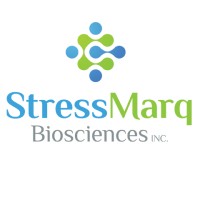MKK3 Polyclonal / DyLight 350 /
Product Details
| Description | Rabbit Anti-Human MEK3 Polyclonal | |
|---|---|---|
| Conjugate | DyLight 350 | |
| Clone | ||
| Target Species | Human, Mouse | |
| Applications | WB, Microarray | |
| Supplier | Stressmarq | |
| Catalog # | Sign in to view product details, citations, and spectra | |
| Size | ||
| Price | ||
| Antigen | ||
| Host | ||
| Isotype |
About MKK3
The protein encoded by this gene is a dual specificity protein kinase that belongs to the MAP kinase kinase family. This kinase is activated by mitogenic and environmental stress, and participates in the MAP kinase-mediated signaling cascade. It phosphorylates and thus activates MAPK14/p38-MAPK. This kinase can be activated by insulin, and is necessary for the expression of glucose transporter. Expression of RAS oncogene is found to result in the accumulation of the active form of this kinase, which thus leads to the constitutive activation of MAPK14, and confers oncogenic transformation of primary cells. The inhibition of this kinase is involved in the pathogenesis of Yersina pseudotuberculosis. Multiple alternatively spliced transcript variants that encode distinct isoforms have been reported for this gene. [provided by RefSeq, Jul 2008]
The protein encoded by this gene is a dual specificity protein kinase that belongs to the MAP kinase kinase family. This kinase is activated by mitogenic and environmental stress, and participates in the MAP kinase-mediated signaling cascade. It phosphorylates and thus activates MAPK14/p38-MAPK. This kinase can be activated by insulin, and is necessary for the expression of glucose transporter. Expression of RAS oncogene is found to result in the accumulation of the active form of this kinase, which thus leads to the constitutive activation of MAPK14, and confers oncogenic transformation of primary cells. The inhibition of this kinase is involved in the pathogenesis of Yersina pseudotuberculosis. Multiple alternatively spliced transcript variants that encode distinct isoforms have been reported for this gene. [provided by RefSeq, Jul 2008]
About DyLight 350
DyLight™ 350 has an excitation peak of 353 nm and an emission peak of 432 nm. It is spectrally similar to Alexa Fluor™ 350, iFluor® 350, AMCA, and Thioflavin T. DyLight™ 350 is most commonly used in flow cytometery and fluorescence microscopy applications.
DyLight™ 350 has an excitation peak of 353 nm and an emission peak of 432 nm. It is spectrally similar to Alexa Fluor™ 350, iFluor® 350, AMCA, and Thioflavin T. DyLight™ 350 is most commonly used in flow cytometery and fluorescence microscopy applications.
Experiment Design Tools
Panel Builders
Looking to design a Microscopy or Flow Cytometry experiment?
Validation References
Reviews & Ratings
| Reviews |
|---|
Looking for more options?
368 MKK3 antibodies from over 21 suppliers available with over 24 conjugates.





